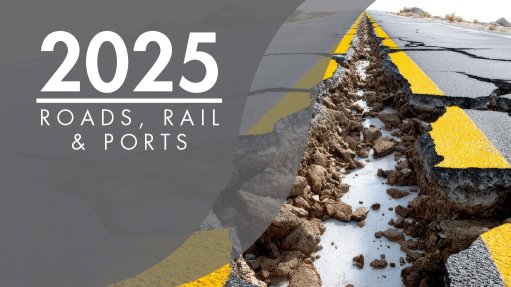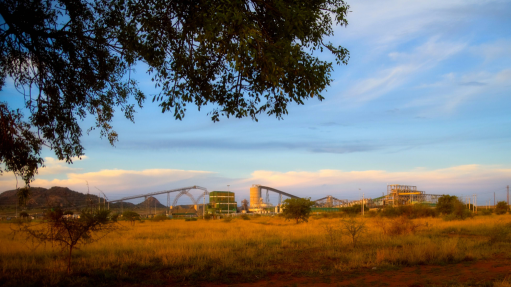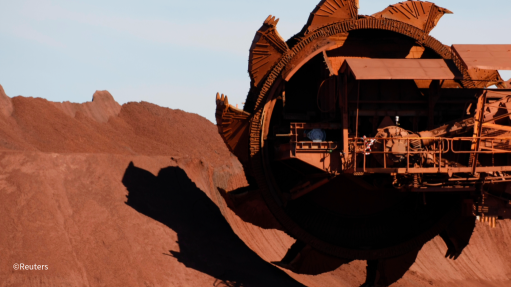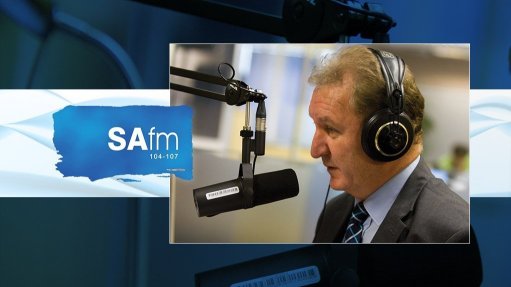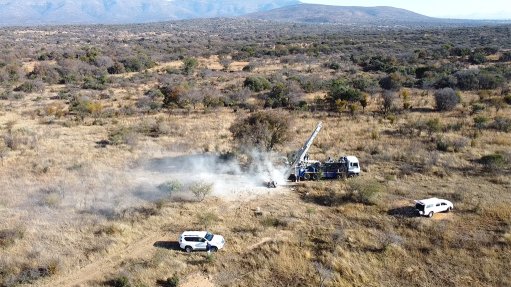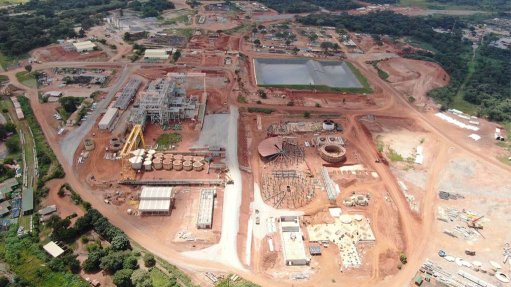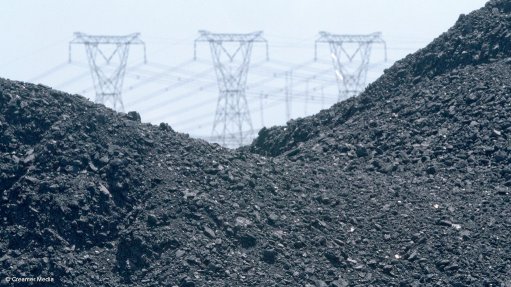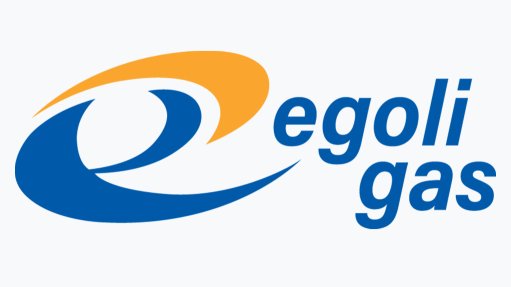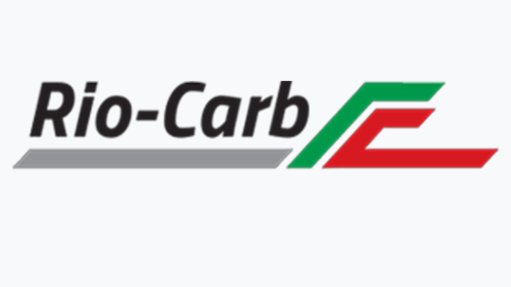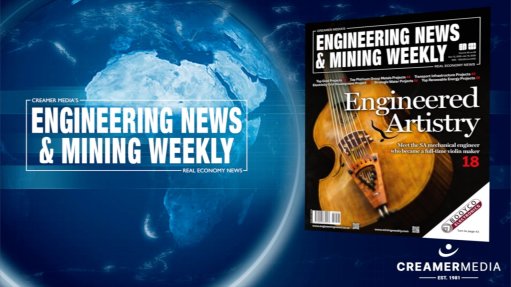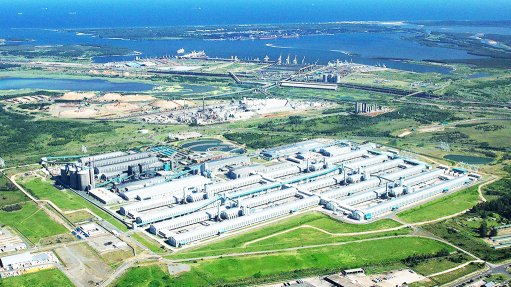Gold Fields boosts free cash, uplifts dividend, outlines South Deep renewables outlook

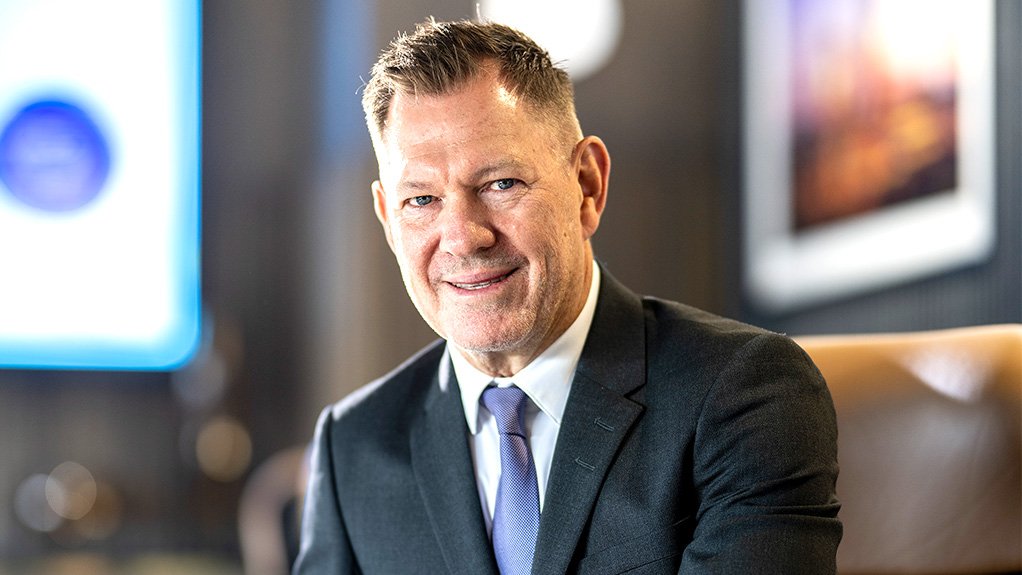
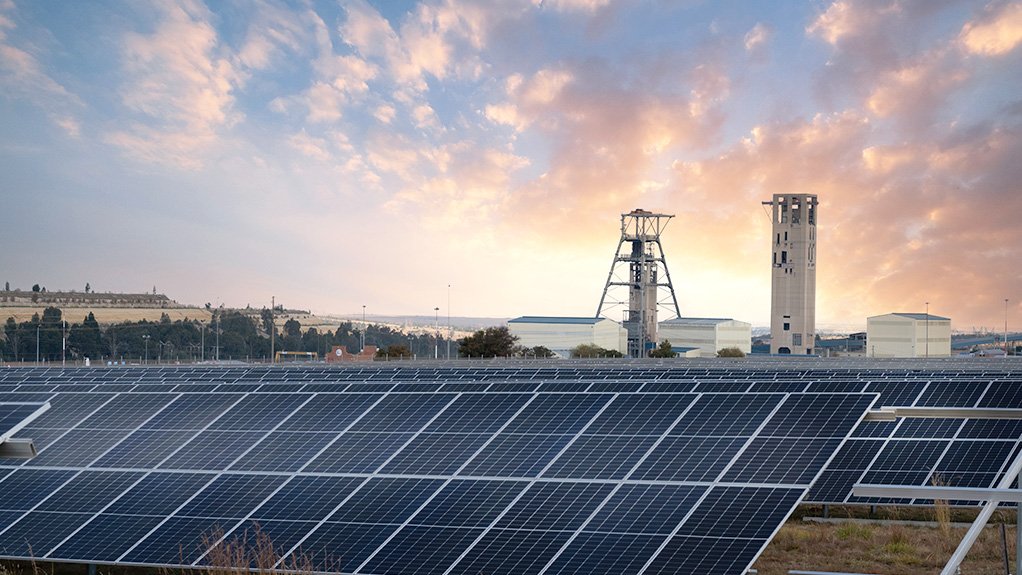
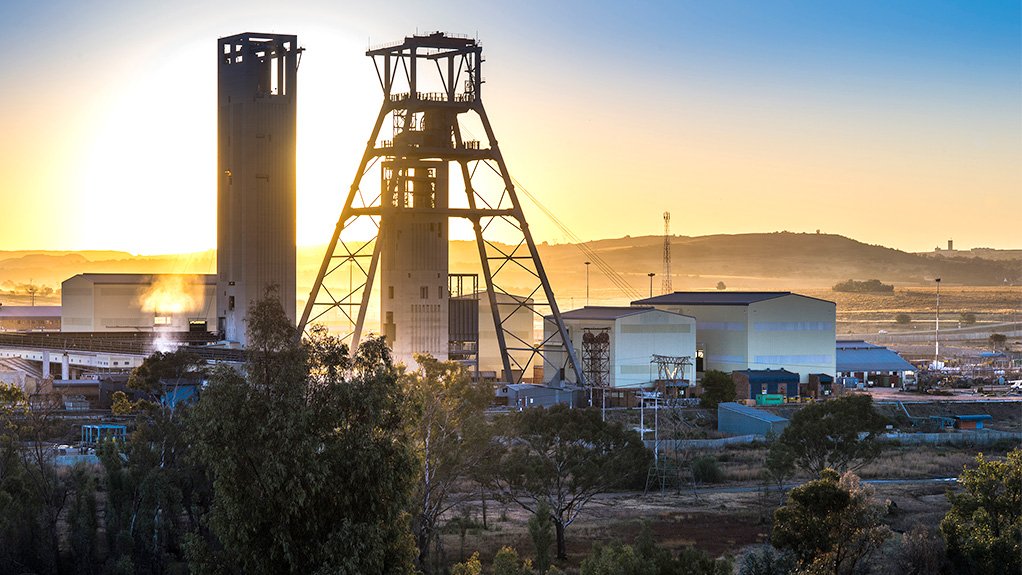
Gold Fields CEO Mike Fraser
South Deep's Khanyisa solar plant.
South Deep gold mine's twin shafts.
JOHANNESBURG (miningweekly.com) – Johannesburg- and New York-listed Gold Fields on Thursday, February 20, delivered an attributable profit of $1 245-million for the year to the end of December, which was well up on the $703-million in 2023.
Improved second-half safety and operational performance allowed for a 67%-higher R7-a-share dividend, taking the 2024 total to R10 a share, a dividend yield of 3.58%
Free cash flow was a 65%-higher $605-million on 10%-lower production of 2.07-million ounces of gold and 26%-higher all-in sustaining costs (AISC).
“We expect to create additional value in 2025,” Gold Fields CEO Mike Fraser stated in a release to Mining Weekly.
Set to provide the value upturn are Salares Norte in Chile, South America, which is ramping up, and the Windfall project in Québec, Canada, which is progressing towards a final investment decision.
Salares Norte’s production is expected to come with materially lower AISC than the group average and drive an increase in profitability and free cash flow per share.
From 2028, Windfall will likely improve portfolio quality and cost curve positioning.
“Concurrently, as part of our asset optimisation programme, we’re undertaking extensive work to optimise efficiencies and improve costs at our operations,” Fraser reported.
The 10%-lower production was mainly owing to lower first-half production, particularly at Gruyere, in Australia, South Deep, in South Africa, Cerro Corona in Peru, and Salares Norte.
In particular, South Deep, which is located 50 km south-west of Johannesburg near Westonaria had a much stronger second half as the team addressed the backfill leakage and rehandling issues experienced in the first half and advanced into higher-grade areas.
Currently, South Deep’s life-of-mine is in excess of 80 years, making it a critical Gold Fields asset for decades to come.
In the December quarter, 10% more gold was produced at South Deep – 78 800 oz compared with 71 700 oz in the September quarter. Reef grade mined fell by 8% to 5.83 g/t.
Tragically, at South Deep, an employee was fatally injured in an underground mobile equipment incident on January 2, and in Australia, a contract employee was fatally injured at St Ives site, and a subcontractor transporting equipment from Agnew mine died in a collision with another truck at an intersection.
RENEWABLES AT SOUTH DEEP
Renewables, which accounted for 18% of group electricity consumption during 2024, provided 17% of electricity consumption at South Deep, where wind, solar and energy storage trials continue amid the functioning of the Khanyisa solar plant, which is able to generate 50 MW or 103 GWh/year and save around R123-million, or 24%, of electricity costs a year.
South Deep’s consumption of about 494 GWh of electricity a year represents 10% of the mine’s annual costs and 93% of its carbon emissions, with Khanyisa – which means Light Up in Setswana – reducing the mine’s carbon footprint by 110 000 t of CO2 a year.
Against that background, these questions were put to Fraser, Gold Fields executive VP external affairs Jongisa Magagula, Gold Fields CFO Alex Dall, Gold Fields VP corporate affairs Sven Lunsche, and Gold Fields investor relations head Thomas Mengel.
Mining Weekly: When are the wind, solar and battery storage trials likely to reach a decision-making level at South Deep?
Fraser: Firstly, we do believe that South Deep has got the most potential within our entire portfolio for really advancing renewable energy as part of its energy mix, given the life, given the cost of supply from Eskom, we definitely see a significant opportunity of reducing costs and improving reliability into South Deep, and obviously the original Khanyisa solar plant has been a significant benefit tothat business. We have done both a detailed wind study as well as the solar extension with battery storage. We are hoping that during the course of 2025 we can start bringing these two to a conclusion and hopefully making that investment decision that will probably lead to spend into 2026, just to allow ourselves time to plan that. But I will say again and reiterate that we see this as a high potential opportunity for us to reduce costs and improve reliability of supply to South Deep.
South Deep’s renewable electricity consumption level at 17% is 1% below the average of the Gold Fields’ group. What is the potential of a near-term above-average renewables uplift if the trials are positive?
Our ultimate objective is to increase that to the maximum technical economic level possible, and we think it is significantly higher than the current levels in which we operate. What would certainly help is, once we get the net billing arrangements in place with Eskom, as we increase the amount of solar and renewables that you can appreciate, you create more and more redundancy in the system, so finding that sweet spot where we can offset when we get into a net surplus of being able to supply back into the Eskom grid, will certainly help us advance that mix, but there should be no reason that it is not significantly higher than what we have today, and in parallel to the ongoing study and trials on solar, wind and battery storage, we’re looking at an unconstrained potential of what renewables looks like at South Deep. That is probably going to take this bit of time, but I think what we would expect to see, on a differential basis, is that we'd be putting more and more investment in renewables into South Deep in years to come.
Stay-in-business capital of $112-million was reportedly spent in 2024 at South Deep, a different big stope mine very different to the narrow stope mines we’re used to in South Africa and more insight into South Deep’s sustainable 2024 capital expenditure (capex) would be appreciated.
Dall: I think last year's numbers are pretty close to the steady state capital numbers we expected, maybe slightly lower due to the operational issues we experienced at the mine. Some of the capital was deferred into this year as we move behind on development and certain infrastructure spend. But I would say a normal rate is probably between $120-million and $250-million, which is a combination of development investment spend as well and we do extensive ongoing development at South Deep, which is part of that.
I just looked at the capex figures for mines in the Gold Fields’ group, and I get the sense that South Deep is lagging, to quite a considerable extent, when compared with the capex going into the likes of St Ives, Gruyere, Ghana and the other mines in the group?
Fraser: We think we've got the appropriate amount of capital spend at South Deep. I think one should take into account that South Deep is a slightly different orebody to what we have at the other assets. When South Deep was initially developed as a deep-level underground mine, a huge amount of the investment went in upfront, and that really stood as the long-term basis for running that operation. What we spend, on a national basis, is really the ongoing development spend, some kind of capital spend on equipment, et cetera, whereas assets like our Tarkwa asset in Ghana, for example, this is a high-volume, high-development capital spend every year as we move more and more material, whereas a massive amount of that heavy lifting has been done in the early life of South Deep. At St Ives, part of the capital split we have is we do have some openpits. So again, you've got a lot of development capital going there, and Gruyere exactly the same. You've got more concurrent capital spend than early development capital, which is what the nature of a deep-level major South Deep mine has.
Dall: Underground have the upfront capital. The openpits have more capital over life due to stripping costs. I think what’s worth highlighting on St Ives as well, is investment in the pits and underground that we’ve put in to set that mine up to be the multi-decade operation. And this year you'll see some spend on the micro-grid at St Ives coming through as well, which will be a lot more one-off capital.
These days, some gold majors are highlighting their copper involvement, which Gold Fields also has in South America, but I think you generally describe it in gold equivalents. Do you have any firmer strategy when it comes to copper?
Fraser: First and foremost, we see Gold Fields as a gold company. Clearly, with our exploration programme and our ongoing business development activities, we do look at copper porphyrys where gold and copper come together that is part of our natural process of exploration. But it's not looking at copper for the sake of copper. It's really looking at copper where it comes together with gold. I think what you would always anticipate to see, and we'd love to find Cerro Corona. That's been a great asset for us, and so part of our exploration is to continue that. But even today, the copper equivalent value of that contribution in our portfolio is way less than 10% and you wouldn't expect to see that fraction change materially. It is quite interesting, because you're quite right, there's been a lot of pivoting towards copper, and we continue to talk about copper having a great outlook and a great future, which I do believe in. But equally, I feel gold has demonstrated its potential to be a really great asset class. Interestingly enough, if you look at our results last year, you know part of that disconnect on volume was also due to the fact that the gold equivalent value of our copper units at Cerro Corona was lower than planned just because of that disconnect between the relative copper/gold price. So, yes, I think copper has got a role to play, but significant strategic pivot is not something that we would be considering.
EXPLORATION
Gold Fields’ exploration portfolio includes 100% landholdings and joint ventures in Australia, Chile, and Peru, complemented by strategic equity positions in Tesoro Gold (17.5%), Torq Resources (14.9%), Chakana Copper (17.2%), Hamelin Gold (14.9%), Killi Resources (10.9%), and Great Southern Mining (4.7%).
With the acquisition of Osisko Mining, a portfolio of listed holdings, including a 20.7% interest in Vior Mining and a 15.6% interest in O3 Mining, has also been inherited. The interest in O3 Mining was sold to Agnico Eagle on January 23 for $21-million.
In Québec, drilling at the Quévillon and Phoenix joint venture (JV) projects (70/30 earn-in with Bonterra, inherited from Osisko) targeted early-stage prospects to unlock the belt’s potential.
Ongoing geophysical surveys and generative work will drive an expanded 2025 exploration programme, the company reports.
In Chile, progress with the Santa Cecilia Joint Venture has been made by finalising a definitive earn-in agreement with Torq Resources for the option to earn up to 75% in the Santa Cecilia project. Priority drilling for 6 000 m is set for early 2025 to advance this high potential copper/gold prospect.
Additionally, a maiden 5 000 m drilling programme began at the 100%-owned landholding near Salares Norte.
In the last quarter of last year, exploration activities advanced across Australia, with JVs including Edinburgh Park (Great Southern Mining), East Lachlan (Gold and Copper Resources), and West Tanami (Killi Resources), making land access progress. Geochemical, airborne, and ground geophysics surveys were completed, paving the way for increased activity in 2025.
During 2024, Gold Fields spent $72-million on brownfield exploration, of which $53-million was spent at Australian assets and $11-million at Salares Norte. Discovered were 2.3-million ounces of additional resources through brownfield exploration of Australian assets, primarily at St Ives (1.4-million ounces), which helped to offset production reserve depletion at St Ives, Granny Smith and Agnew.
Article Enquiry
Email Article
Save Article
Feedback
To advertise email advertising@creamermedia.co.za or click here
Press Office
Announcements
What's On
Subscribe to improve your user experience...
Option 1 (equivalent of R125 a month):
Receive a weekly copy of Creamer Media's Engineering News & Mining Weekly magazine
(print copy for those in South Africa and e-magazine for those outside of South Africa)
Receive daily email newsletters
Access to full search results
Access archive of magazine back copies
Access to Projects in Progress
Access to ONE Research Report of your choice in PDF format
Option 2 (equivalent of R375 a month):
All benefits from Option 1
PLUS
Access to Creamer Media's Research Channel Africa for ALL Research Reports, in PDF format, on various industrial and mining sectors
including Electricity; Water; Energy Transition; Hydrogen; Roads, Rail and Ports; Coal; Gold; Platinum; Battery Metals; etc.
Already a subscriber?
Forgotten your password?
Receive weekly copy of Creamer Media's Engineering News & Mining Weekly magazine (print copy for those in South Africa and e-magazine for those outside of South Africa)
➕
Recieve daily email newsletters
➕
Access to full search results
➕
Access archive of magazine back copies
➕
Access to Projects in Progress
➕
Access to ONE Research Report of your choice in PDF format
RESEARCH CHANNEL AFRICA
R4500 (equivalent of R375 a month)
SUBSCRIBEAll benefits from Option 1
➕
Access to Creamer Media's Research Channel Africa for ALL Research Reports on various industrial and mining sectors, in PDF format, including on:
Electricity
➕
Water
➕
Energy Transition
➕
Hydrogen
➕
Roads, Rail and Ports
➕
Coal
➕
Gold
➕
Platinum
➕
Battery Metals
➕
etc.
Receive all benefits from Option 1 or Option 2 delivered to numerous people at your company
➕
Multiple User names and Passwords for simultaneous log-ins
➕
Intranet integration access to all in your organisation








